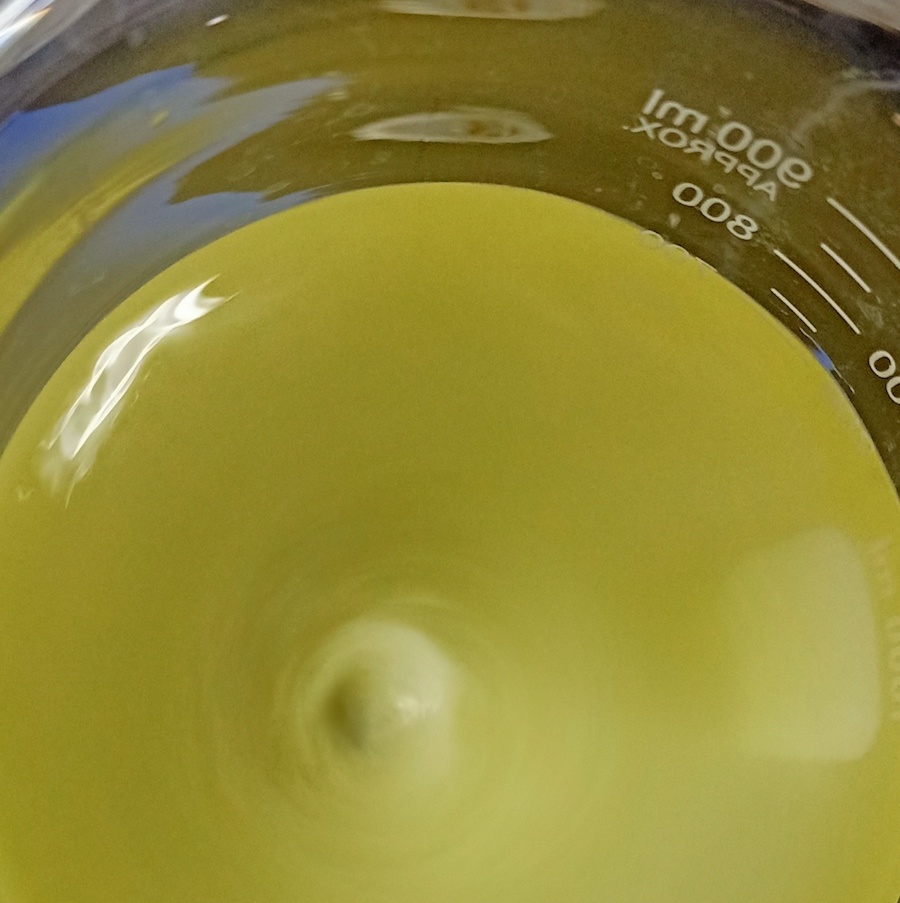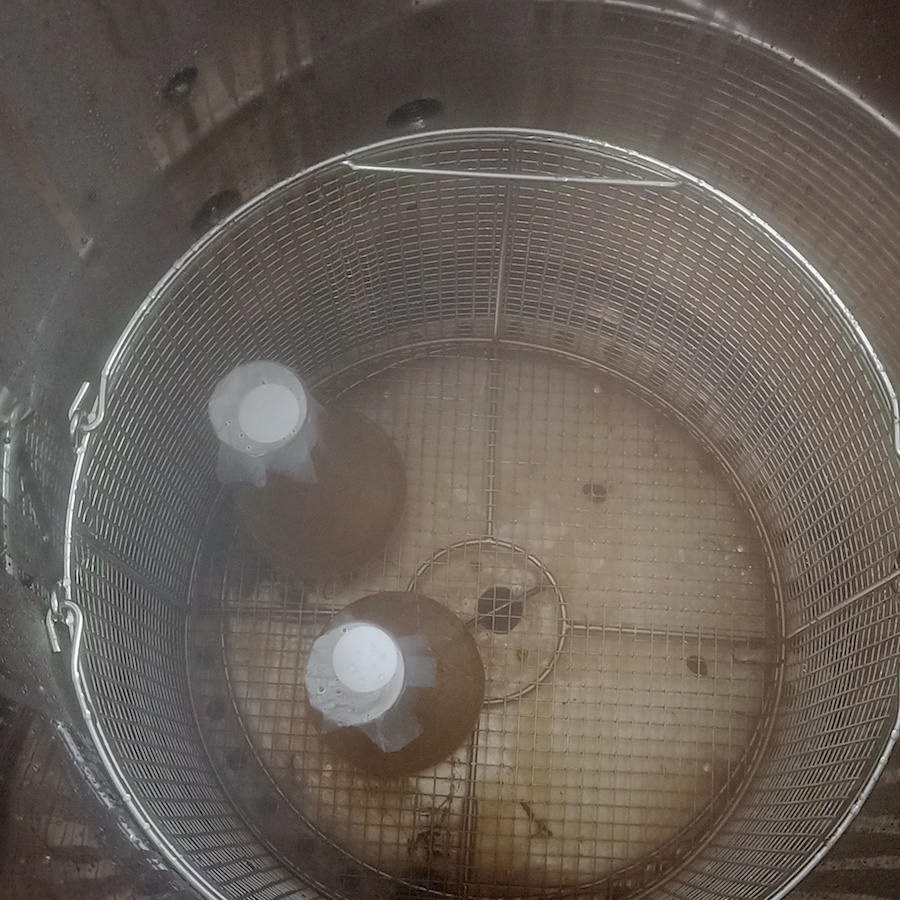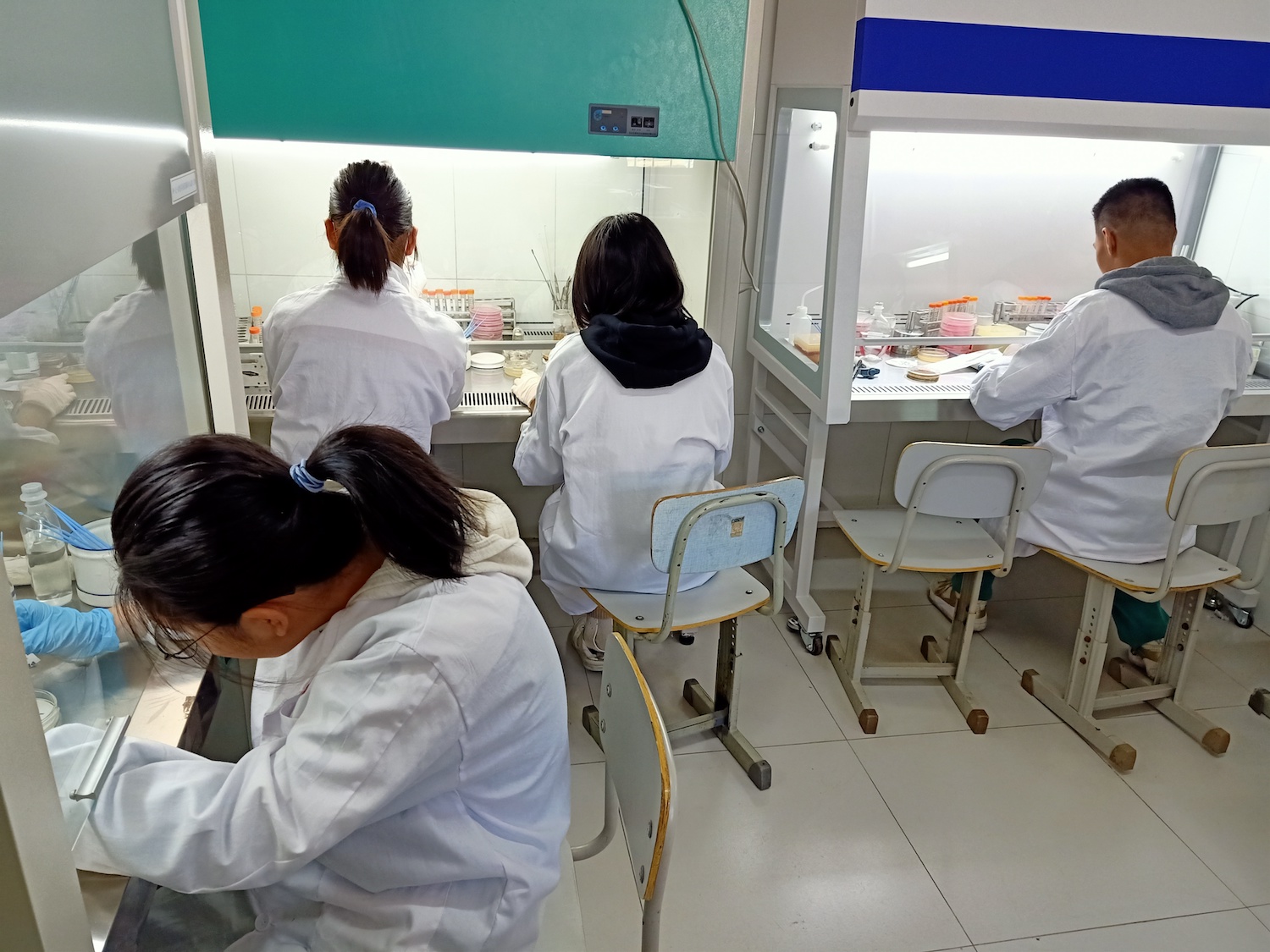Living Roots Awaken in my Hands found dust on Luria -Bertani
I like to explore the relationship between art, science and society. My work is focused on transformation and the surrounding ‘entanglements’ that constitute life and our ecosystems. I view Microbe Art as a transformation that reflects bigger concerns such as the balance of ecosystems and working within a delicate environment.
The value of art and science is not so much about introducing technologies but to inspire new thinking and new ways of confronting the various challenges for our current world.
I first started working with the IPE (Institute of Process Engineering- Beijing) on a project developing “The Microbe Art” in December 2020. Working with Prof Xing Jianming and IPE has been a hugely positive experience . A special thank you also to Dr Peter Mu who helped me in the laboratory, he introduced the world of making growth media, autoclaving, and aseptic techniques,
Microbe Art invites different ways of seeing.
Microbe Art is exciting because it deals with these tiny nanomachines we don’t normally see. However, when grown in colonies under certain conditions we can witness their presence in unexpected ways.
The same petridish under different light
 1. “Lifelights II ” E coli GFP, Kocuria Rosea, White M , on LB under UV.
1. “Lifelights II ” E coli GFP, Kocuria Rosea, White M , on LB under UV.
2.”Lifelights I ” E coli GFP, Kocuria Rosea, White M , on LB on lightbox.
3. “Lifelights III ” E coli GFP, Kocuria Rosea, White M , on LB on dark background.
What are the things we feel when we look at Microbe Art?
Working in the same office as Dr Mu is Dr Yang , Below is Dr Yang’s plate of microbes gathered from his home , this provided Dr Mu and I with new microbes later sequenced and identified as Kocuria Rosea , Glutamicbacter Nictoniane , and others for further work .
 “Life is a box of chocolates- you never know what you’re going to get”
“Life is a box of chocolates- you never know what you’re going to get”
Microorganisms are ubiquitous and are found from within our own bodies to the deepest oceans and frozen lakes. They drive processes such nutrient cycling in ground and water ecosystems. Microbial activity in humans includes producing food, digesting food, reducing inflammation etc. And of course there was that popular myth, the idea that there are much more bacteria than human cells in the body but scientists have concluded it is much closer 1:1 ratio , in fact “ the numbers are similar enough that each defecation event may flip the ratio to favour human cells over bacteria “Nature 08, Jan 2016 ( Don’t you just love the way scientists talk!)
1.Making Luria Bertani growth media
2. Autoclaving growth media
 3. The plates are poured and allowed to cool and solidify under UV light to help maintain a sterile environment, The
3. The plates are poured and allowed to cool and solidify under UV light to help maintain a sterile environment, The
lid sitting slightly above the cooling gel reduces chances of contamination however sometimes condensation gets caught on the lid sitting above the plate, this can sometimes contaminate the gel.
 4. Glove contamination is easier to happen than you might think
4. Glove contamination is easier to happen than you might think

5. After using wire loops to inoculate the plates I discovered I often broke the surface of the media. I later tried sterile plastic loops which were far easier tools to manage. Of course I broke even more rules using sterile brushes, and even using print blocks .
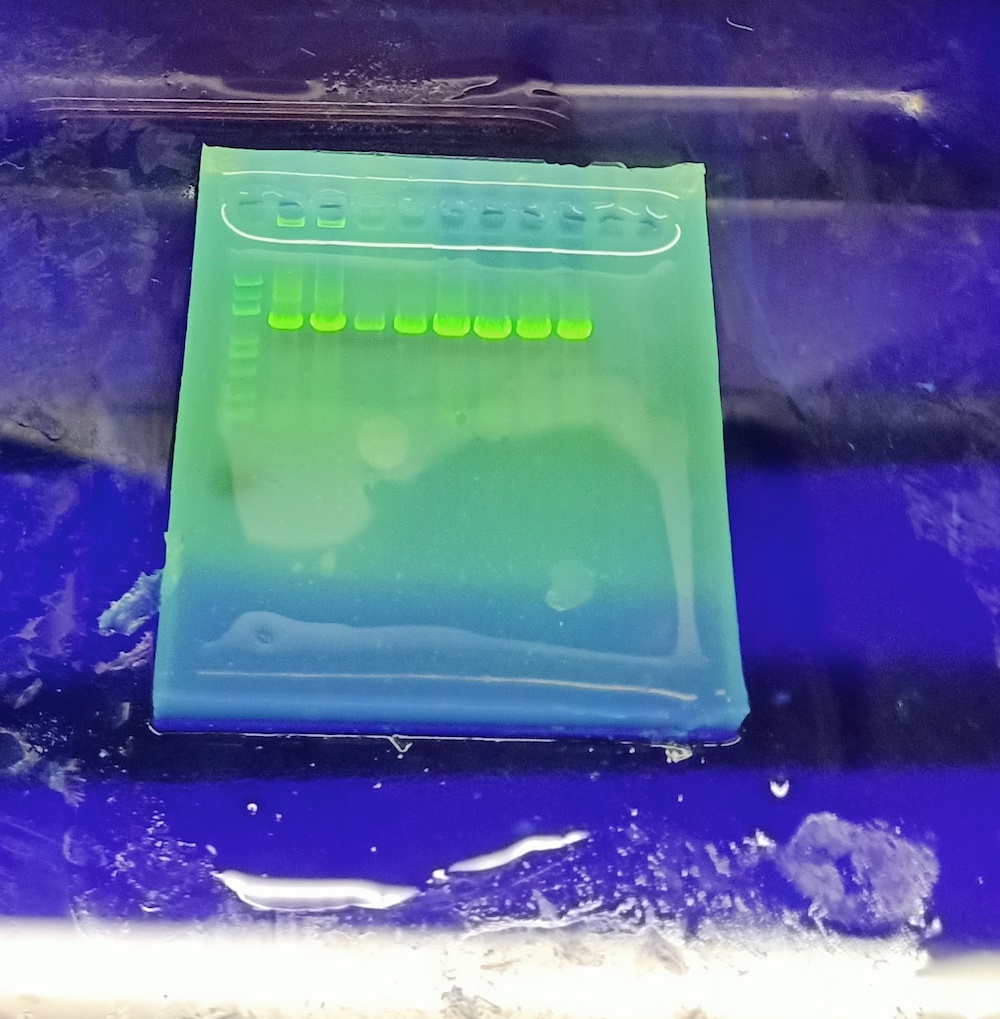 6. Electrophoreis shows clear and distinct bands showing PCR was successful.
6. Electrophoreis shows clear and distinct bands showing PCR was successful.
When we identified colonies with good performance growth and colour Dr Mu isolated the colonies a few times to make sure they were pure without other strains . This was the first time I had seen a PCR (Polymerase Chain Reaction) machine being used. After electrophoresis confirmed the PCR worked Dr Mu sent off samples for sequencing. When the sequence code results arrived, he matched the codes using a website where we could upload the segment of sequence to match and identify the exact strain of colonies with which we were working.
Microbe Art Workshops at Middle School 101
Microbe Art and transdisciplinary education
Microbe Art Workshop at Middle School 101
The Microbe Art Project brought scientists from the IPE including Prof Xing Jianmin, Dr Peter Mu and Dr Yang together with Teacher Ma (a well renowned science teacher here in Beijing) to present workshops on exploring different growth processes and developing aseptic techniques in order to create artworks at Middle School 101. This bringing together scientists, students, and artist transcends the boundaries of individual disciplines, discovering flexible forms of learning and collaboration.
IPE scientists Dr Peter Mu, Dr Nadia Samak, Teacher Ma, myself, Prof Xing Jianmin and Dr Yang on our first visit to Middle School 101 in the school horticultural centre December 2020
Microbe Art in environmental research
Microbe art will extend beyond the petri dish. Scientists at IPE and those from other institutes will be working together developing plastic degradation in art. We are aiming to develop this over the next few years. Currently there is an ongoing academic research project spanning many countries and universities on plastic degradation. We are aiming to collaborate in such projects. I believe Microbe Art will be useful in developing popular science, cross discipline education and extracurricular activities for middle schools . This is also important as we address the ecological emergency as we develop microbial art in plastic degradation and many other areas as we prepare for an ecologically safe living space for humanity and all living things.
****************
This was my “Year of the OX post” made on my blog earlier this year
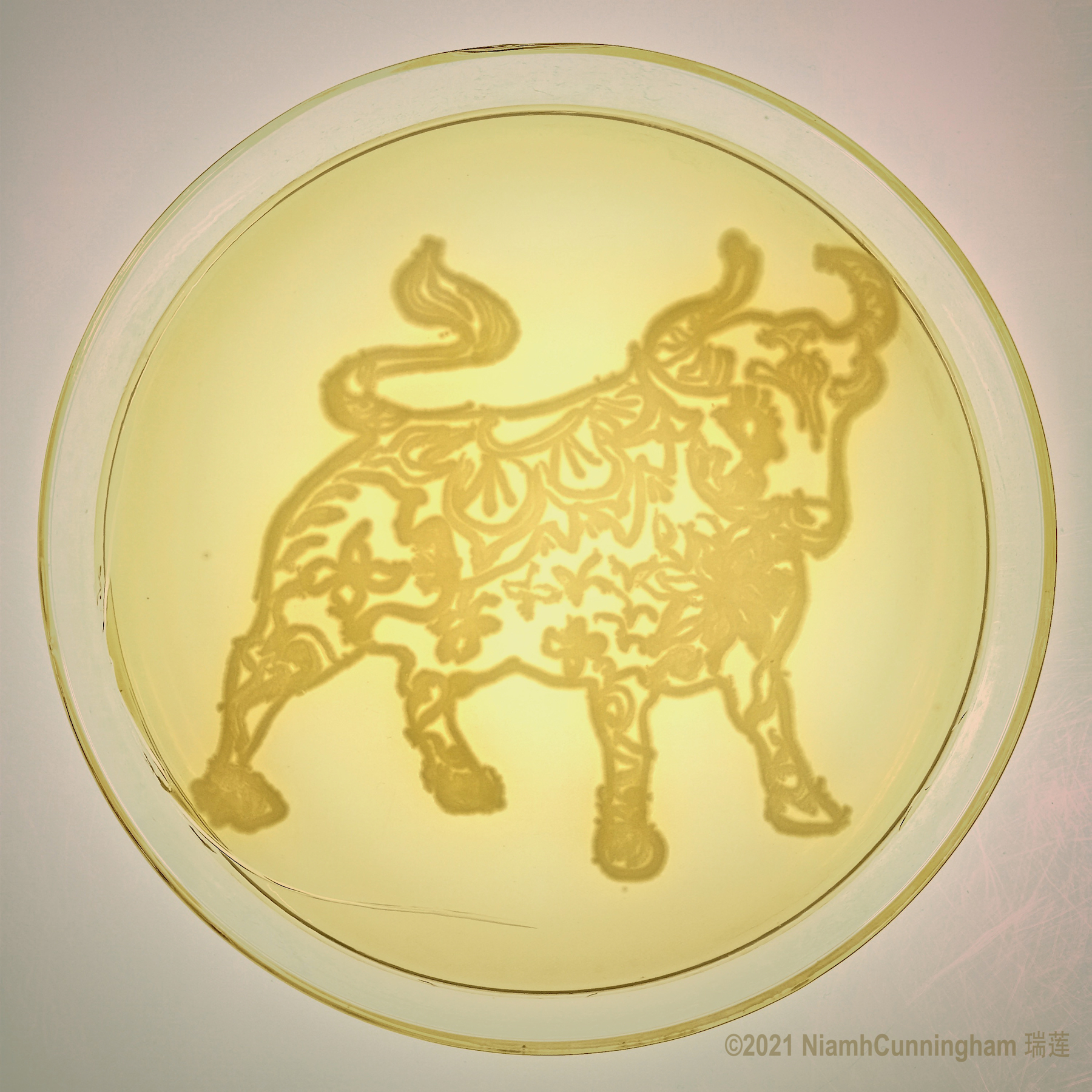 The year of the Vaccinae, CW on Luria Bertani agar on lightbox, Niamh Cunningham 瑞莲 2021
The year of the Vaccinae, CW on Luria Bertani agar on lightbox, Niamh Cunningham 瑞莲 2021
Vaccinus is a latin adjective meaning ‘from cows’ (the word vacca meaning cow). At the end of the 18th century English physician Edward Jenner injected cowpox material to increase immunity protecting against the more serious small pox. The injection itself was called vaccination.
******************************************


